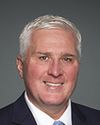Good morning, members of the committee. It is a pleasure to be here with you today.
My name is Donald Walker, and I am the chief enforcement officer at Environment and Climate Change Canada. I'm joined by my colleague Hannah Rogers, who is the director general of environmental enforcement.
We are pleased to be here to explain our mandate and provide you with an overview of our operations. I will also talk about our use of digital forensics software.
Environment and Climate Change Canada administers several environmental statutes and their associated regulations. These include the Canadian Environmental Protection Act, the pollution prevention provisions of the Fisheries Act, and the Greenhouse Gas Pollution Pricing Act, among others. We also enforce wildlife laws, such as the Wild Animal and Plant Protection and Regulation of International and Interprovincial Trade Act, the Migratory Birds Convention Act and the Species at Risk Act.
The Environment and Climate Change Canada enforcement branch was formed in 2005 with a mandate to conduct inspections to verify compliance with these laws and their associated regulations, investigate possible violations and take action to compel compliance when violations are identified.
With nearly 500 employees across Canada, the Environment and Climate Change Canada enforcement branch is comprised of uniformed enforcement officers who have the powers and protections of peace officers when enforcing the laws under which they are designated. These officers conduct thousands of inspections per year to verify compliance.
If enforcement officers find sufficient evidence of an alleged violation under the environment and wildlife protection acts for which they are responsible, they will take appropriate action in accordance with our compliance and enforcement policy. These actions are designed to restore compliance and may include issuing warnings, directions, compliance orders, tickets and administrative monetary penalties. When the environmental harm or the factual circumstances warrant it, officers conduct investigations and collect evidence to support the laying of charges.
To this end, Environment and Climate Change Canada's enforcement branch works closely with colleagues at the Department of Justice Canada and the Public Prosecution Service of Canada to build prosecutable cases.
Since the creation of the enforcement branch, the nature of the non-compliance we uncover has changed and the evidentiary requirements to establish non-compliance in court have grown more complex.
While the majority of our regulated sectors are compliant, we also respond to non-compliance by organizations and individuals who sometimes go to great lengths to conceal or hide the negligence that led to serious environmental damage or biodiversity loss. This has only increased as the courts have issued more serious penalties.
In response to this changing reality, enforcement received a mandate in 2020 to modernize its operations. This included the implementation of a risk-based approach for setting its inspection priorities to ensure that its resources are targeted where the potential for environmental damage or impact on wildlife is greatest. It also included investments in new information technology infrastructure, data analytics capacity and digital forensics software, in large part to ensure that we could meet modern information management expectations as well as provide evidence to meet the standard of the courts.
Our digital forensics lab is staffed by a small number of specialized analysts. These employees are highly trained professionals, who are trained first as enforcement officers and then as digital forensics experts. This training ensures that they understand the limits of their authorities and the specific mandate of the digital forensics unit.
The digital forensics software we use can only be employed under warrant, and only within the context of enforcing Environment and Climate Change Canada legislation. Digital data that can be imaged or acquired are extracted on site during the execution of a court order. Devices from which data cannot be extracted on site are collected and brought to the national laboratory. Digital evidence that is collected typically consists of information that can be stored on smart phones, laptops, cloud-based storage systems, servers and flash drives.
Digital forensics analysts are the only people within Environment and Climate Change Canada who use such tools. Our department must continue to evolve and innovate to remain effective, but these new tools require that we continue to pay close attention to how we manage information, particularly as it relates to privacy.
Environment and Climate Change Canada takes privacy very seriously and to this end enforced a comprehensive review of its information management procedures, including for the use of digital forensics software. We are completing new privacy impact assessments, with those that focus on our operational activities being prioritized. We communicated our intentions to the Privacy Commissioner in June 2022.
This review, which started in 2023, will include specific tools like digital forensics software. The operational components are our priority. The privacy impact assessment that covers forensics software will be completed in the upcoming fiscal year.
Thank you for your attention. I will be happy to answer questions from the committee.











